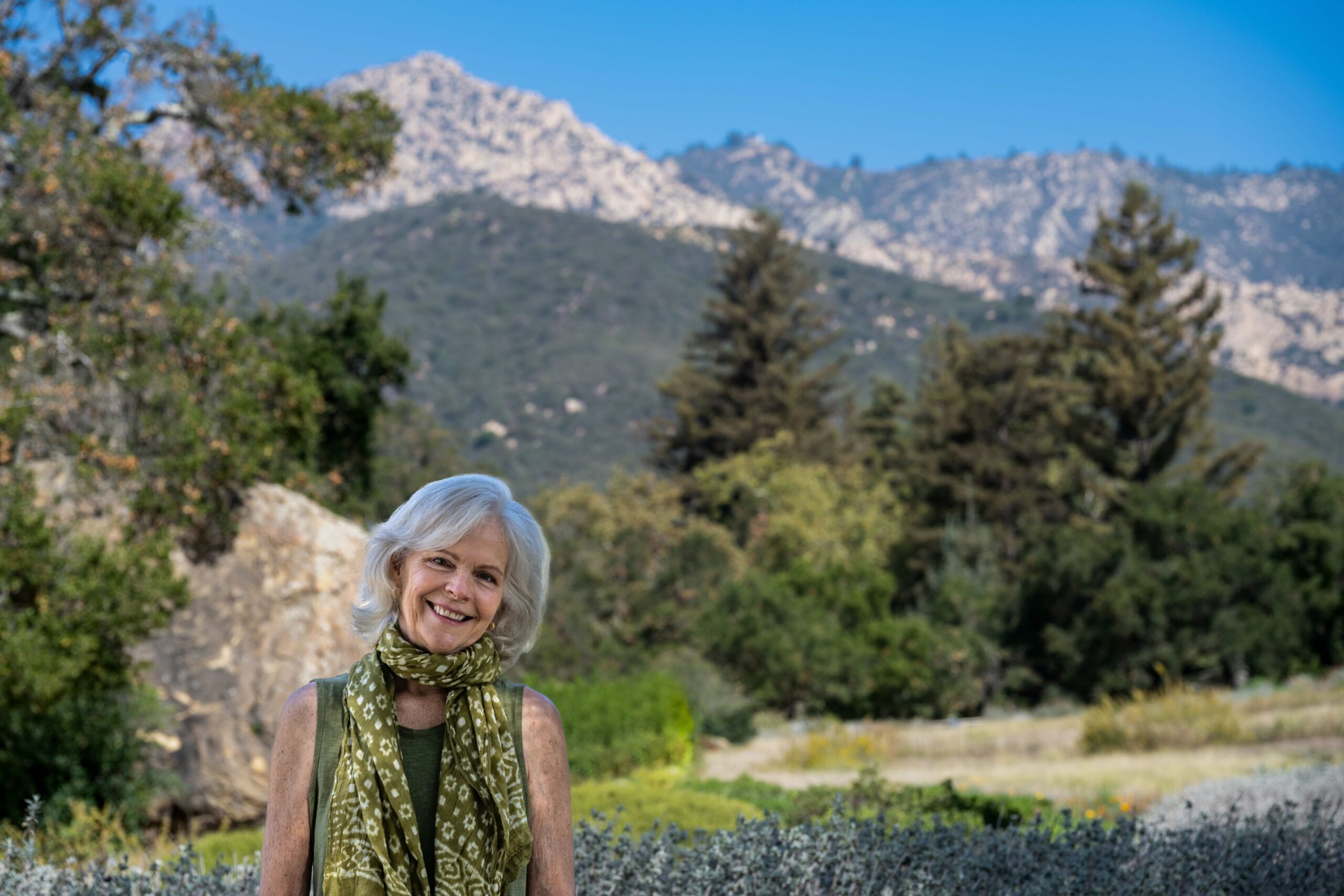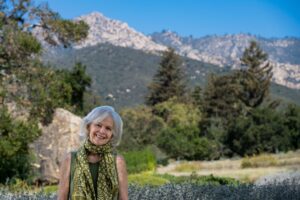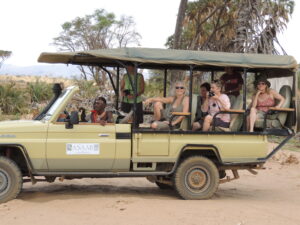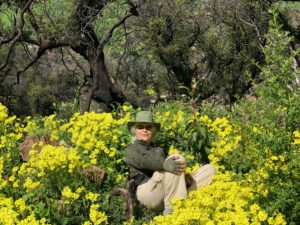
Moving At the Speed of Nature {Interview with Lori Robinson by Katherine Sanders}
I sat with Lori Robinson on the Caretaker’s Cottage deck, situated just below the Garden Nursery at Santa Barbara Botanic Garden, the morning sun peeking between the leaves of red grape (Vitis ‘Roger’s Red) climbing the trellis over our heads. It was the perfect setting to get to know Lori, an author, a safari specialist, a self-proclaimed “wild keeper,” and, more recently, a volunteer docent at the Garden.

A Heart for California
Growing up a total animal lover – idolizing Jane Goodall in a goats-and-raccoons-and-alligators-as- pets kind of family – inspired Lori’s broader love of the natural world. “I’ve always wanted to help wild places and wild animals,” she recounts. Even though Lori was raised in Florida, her story is deeply intertwined with California and its landscape. “I was supposed to be born in California,” Lori beams. “My parents met at Stanford. They were married, and then they got pregnant with me, flew to Florida, and never came back. So, I was born there, but California is in my genes. I always knew I was going to come back here.” A hawk calls in the distance, punctuating Lori’s sentiment.
Lori first moved to California to study at the University of California, Santa Cruz, majoring in environmental studies and biology. After graduating, she left the state to work for the Animal Welfare Institute in Washington, D.C. She began writing about whaling issues, factory farming, and animal experimentation and testing. The work wore on her though, and she found herself hopeless and distraught by the weight of these issues. “At the time, I believed I was too sensitive to endure the work,” Lori admits, “but in time I saw that I was just young, impatient, and naïve about how long it takes to create change.”
Falling in Love with Native Plants
Lori eventually found her way back to California and this time to Santa Barbara. After buying a home, she connected with the Garden and started taking gardening classes. It wasn’t long before she realized her home garden could be more than beautiful. It could make a real difference. “I learned about the
benefits of planting with native plants and it became such a passion of mine. We can all grow native plants to help ‘save wildness’.
Let Nature Set the Pace
This notion steered Lori in a different direction than her time in D.C. had. “We can all have a patch of the Garden at home, even if it’s just a native plant on our patio.” She acknowledged the sometimes- paralyzing feeling people face when trying to decide what, where, or how to start planting native plants, but, she continued, “Gardening at home gives me a sense of control. It makes me feel like I can do something instead of [single-handedly] stopping climate change and a potential sixth mass extinction, which feel so big I don’t know where to start.” She explained Douglas Tallamy’s newest book, “Nature’s Best Hope,” which is about this exact concept. Lori expressed a sense of hope about Tallamy’s message.
“Can you imagine if we all filled our gardens with even a few native plants? It would create a little ecosystem route for native pollinators to follow!” Taking even small steps like these offers a tangible solution to the complex and abstract challenges we
face with the climate and biodiversity crises. For many though, this action may seem too small and the fact that natural processes don’t have immediate results only heightens their indecision. “The barrier to entry is low though,” Lori stressed. “You just need to start with one plant.” And though it takes a few seasons for plants to establish themselves, she explained, “You have to be brave enough and patient enough to let the system start to work in its natural way.” It’s sage advice that’s evident all around the Garden.
Finding Nature Everywhere
Some years ago, Lori started leading safari tours in Africa as part of the Jane Goodall Institute.

“Everything in Africa is so big. The spaces, the trees, the animals. It’s incredible,” she waved her arms to emphasize. “People go to Africa and they say, ‘Oh my gosh, the animals!’ and honestly, we’ve got them [here in Santa Barbara] too, but they just look different.” We often consider our wild animals – skunks, raccoons,
opossums – pests more than majestic creatures. “You can’t say, I’ don’t like skunks,’ but like birds. They all kind of work together and rely on each other,” Lori illustrated. This thinking aligns with the Garden’s mission to conserve native plants because they, in turn, sustain all life on Earth. In leading safaris, Lori noticed people have a way of thinking they need to “go to nature,” but she emphasized that nature is everywhere. “Try going outside your door and allow for the same kind of openness you’d have when you go on a hike. That same feeling can be found right on your patio with a little care.” Lori had been learning recently about the idea of a sit spot, which inspired her to start her practice. “I sit outside with a cup of tea every morning. The key is to have a spot you can go to every single day for the same amount of time. It helps create the familiarity and the patience to notice things, big and small.”

The Feeling of Home
The appreciation for California as a biodiversity hot spot was always in Lori’s sight line, and now not only does she live here, but she gets to spread her joy and respect for nature as well. “I love this place,” exclaimed Lori about the Garden, “and now, being a docent, I’m able to encourage people to plant with native plants.” She noted that people make mistakes “like spraying, cutting down, planting the wrong things.” But we can course correct. The Garden is a great teacher in that regard. As Lori encouraged, we need to plant natives and then “slow down to let nature do its thing.”
